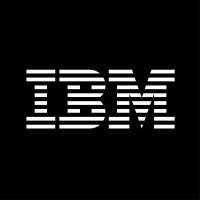

It wasn’t long ago that any organization wishing to operate computers had to have, at the very least, its own server room — if not a full-fledged data center. These days, a business can access infrastructure as a service (IaaS), scaling up or down according to its needs. Read on to learn about the benefits of IaaS, and see the top IaaS providers.
Read more: On-Prem Infrastructure Is Here to Stay. But What Workloads Go Where?
ServerWatch researched the best IaaS providers. Here are our top picks, in no particular order.

DigitalOcean’s primary IaaS offering is Droplets, which is basically a compute offering (virtual machines in the cloud). It offers a number of different types of Droplets for different use cases.
The company promises a simple user experience, excellent price-to-performance value, and easy-to-understand pricing and billing. These services are designed specifically with startups and small and medium businesses (SMBs) in mind.

Amazon Web Services (AWS) includes IaaS within its massive portfolio of services. The problem is finding it among so many offerings. Rather than having a combined IaaS offering, the company prefers to split things up into individual components for storage, compute, networking, containers, applications, and more.

Linode, recently acquired by Akamai, positions itself as an alternative to AWS. It helps organizations deploy cloud compute, storage, and networking in seconds with a full-featured API, CLI, and Cloud Manager as a user-friendly interface.

With a wide range of cloud services, Synology DiskStation Manager (DSM) allows users to connect to Synology NAS. Its services boost efficiency with secure and reliable cloud solutions in areas such as storage, password management, file sharing, and backup.

Alibaba Elastic Compute Service (ECS) offers all the typical IaaS features and more. It comes with fast memory and the latest CPUs to power cloud applications with low latency. Further, ECS instances can be deployed in a few clicks.

Microsoft Azure Virtual Machines can run SQL Server, SAP, Oracle, and HPC applications. The platform offers low-cost, per-second billing with users only paying for the compute time used.

Google Compute Engine is a secure and customizable compute service to run virtual machines on Google Cloud infrastructure. The service has options for compute-, memory-, and accelerator-optimized machines.

IBM Cloud Private is different from the other products evaluated here. This IaaS solution is available on-premises or at the business location in a data center-type environment. Its strength lies in security, with the ability to host servers in a private cloud environment.
IaaS is a type of cloud computing service that offers essential compute, networking, and storage resources on-demand, often with usage-based pricing. These services allow users to run and operate their software applications without having to worry about hardware procurement and maintenance.
With IaaS, users have complete control over their infrastructure and the software and tools associated with their technology. But they don’t have to deal with the hassle of managing their own physical infrastructure, like bare metal servers or data centers.
The advantages are many. IaaS allows developers to select the layers of abstraction they want. They can choose to manage everything or layer in components — like load balancers or other services like managed Kubernetes — to make maintaining their application easier.
Moreover, with IaaS, users can avoid the upfront costs and significant overhead of buying hardware and maintaining physical data centers.
“They pay only for what they need every month,” said Raman Sharma, vice president of product and programs marketing at DigitalOcean. “With IaaS, users also don’t have to worry about technical maintenance, software updates, or troubleshooting equipment issues.”
Read more on Datamation: 5 Cloud Networking Trends for 2022
There is some confusion between IaaS and platform as a service (PaaS) — and sometimes even with software as a service (SaaS), which started it all with cloud application services delivered and managed by third-party vendors. As these services operate via a web browser, they do not require downloads or installations on the client side.
PaaS took things a stage further than SaaS by adding another layer of abstraction for the end user. With PaaS, users don’t need to manage the operating system, runtime, or other infrastructural components of their application.
PaaS provides a fully managed solution for developers looking to launch applications quickly, so developers can focus on their development work and let the provider manage back-end services and system administration.
“Developers who don’t need to customize their underlying infrastructure and want a fast, easily managed, and readily scalable way to develop their application often choose PaaS,” said Sharma.
And then there is IaaS, which delivers the cloud computing infrastructure — including servers, network, operating systems, and storage — through virtualization technology. These servers are generally provided via a dashboard or API. That means it offers the same capabilities as a regular data center without anyone having to physically maintain the underlying infrastructure.
However, when using an IaaS solution, clients are responsible for managing aspects such as applications, runtime, OSs, middleware, and data.
Read more on CIO Insight: IaaS vs PaaS: Compare Cloud Service Models
Property of TechnologyAdvice. © 2025 TechnologyAdvice. All Rights Reserved
Advertiser Disclosure: Some of the products that appear on this site are from companies from which TechnologyAdvice receives compensation. This compensation may impact how and where products appear on this site including, for example, the order in which they appear. TechnologyAdvice does not include all companies or all types of products available in the marketplace.